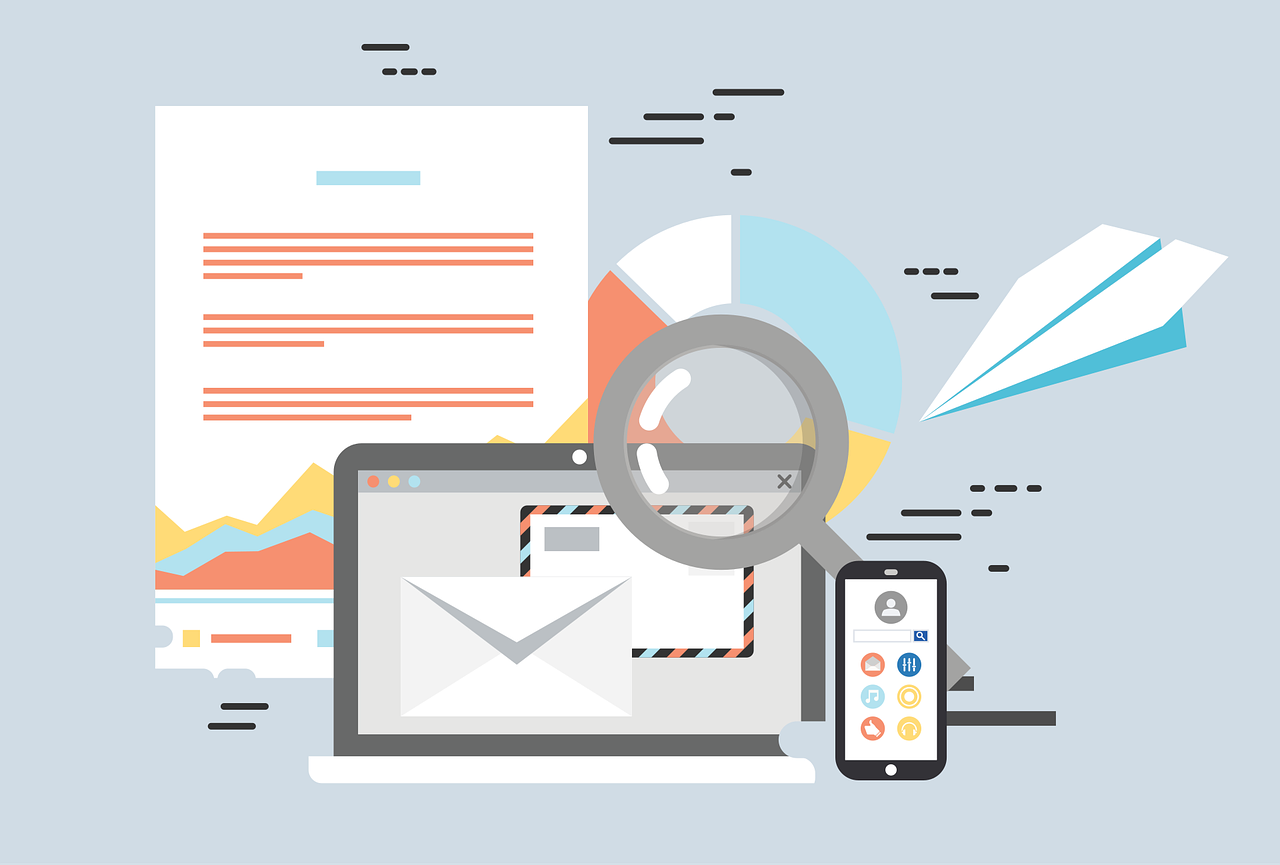Cyber Security and Cloud computing
The one aspect of IT that has experienced the maximum growth in the last few years is undoubtedly the use of the cloud. In the coming decades, it is thus only expected that cloud computing can only keep blazing forward.
It might be debatable how prominent the use of passwords would be or how the position of the cloud will be in the coming future. The key role that Artificial Intelligence would play in cybersecurity is something that can be vouched for. AI will be the catalyst in determining whether the industry can keep up with the threat.
Much like AI, data breaches are expected to be more prevalent in the coming years than they are now — which is both unfortunate and scary. As more data and devices appear online, the risk of a breach only grows.
Cloud security, also known as cloud computing security, is a subset of cybersecurity, devoted to securing cloud computing systems. Cloud security encompasses the policies, hardware and software, best practices, techniques, procedures and processes used to maintain the integrity and security of cloud data, infrastructure, applications, and systems.
The security measures in place protect data privacy, uphold regulatory compliance, provide governance, oversee data retention, and control authentication and access to data. The steps used to secure data and infrastructure might vary between organisations, serving to filter malicious traffic and limit access to authorised users. Responsibility and security efforts are divided between the platform provider and end users. The most robust cloud security solutions utilise processes, automated protection, and education of the end users and infrastructure administrators.
The Bureau of Labour Statistics projects that job growth for Information Security Analysts will grow 33% from 2020 to 2030, which might seem very rapid growth. Information technology and computer specialist jobs are projected to grow 11% as a whole over the same time period, which is also much faster than average.
The acceleration of cloud computing adoption is fueling the demand for cybersecurity specialists to monitor and manage internal and external threats in both large and small organisations.
Cloud is the new normal but brings along threats
In the new post-pandemic world of hyper-connectivity, enterprises are investing in hybrid Cloud solutions, PaaS systems, augmented reality, and open-partner ecosystems. The past has taught us to never underestimate the growth potential of cyber criminals. The coronavirus pandemic revealed what attackers are capable of.
The Cloud holds the world’s cyberinfrastructures and global economies in place. It takes minutes for companies to slip up and leak highly sensitive data due to gaps in Cloud data protection and applications. This would mean business owners would have to remain worried about governance, security, and compliance issues when choosing Cloud vendors.
Cloud technology intertwines with everyday lives and helps share experiences as people, cultures, and worldwide events. It is the hidden medium used to define and understand the world for the better. The global pandemic forced businesses to migrate towards remote working models. This led to the rapid growth of Cloud solutions. But the security aspect was neglected. European Cybergang DarkSide fell under the FBI’s radar when it launched the Colonial Pipeline Attack on May 7, 2021, and forced the organisation to shut down its operations by infecting servers with ransomware. A group of researchers from the Royal Holloway, University of London, discovered how Telegram bots could be manipulated and force chats to get reordered. This meant adversaries could steal plain text from encrypted messages and find ways to “hack” the app. Despite Telegram offering the best End-to-End encryption via secret chats, this proved how threats can find ways to exploit emerging Cloud apps and services. Cloud is not equipped to handle insider threats, since trusted employees can drop off malicious codes to infect systems. Unfortunately, this could just be the beginning.
Thus, data governance is no longer a topic that can be ignored by CIOs, CEOs, and CISOs. Business owners are on the hunt for Cloud platforms that offer reliability, functionality, and responsible access to public and private cloud data.
Researches suggest that Cloud security misconfigurations are the leading causes of data breaches and over 265,000 accounts were found misconfigured out of the 1 million that were surveyed across Southeast Asia. Cloudstar became victim to a highly sophisticated ransomware attack this year and its systems went completely offline when hackers hijacked a critical flaw found in their services. Unauthorised access to Cloud data, Distributed Denial of Service (DDoS) attacks, lack of secure APIs, and sensitive data leaks are the top Cloud security threats being faced by global organisations. Businesses that were not using Cloud security platforms were at risk of lacking architectural visibility and future data breaches. There are many tools available for conducting security audits of these services that enterprises should take advantage of.
Future of Cloud computing
Cloud has just taken off. Thus the future of the cloud might not be able to be predicted exactly. With the explosiveness of IoT networks and 5G, Cloud seems to have a promising future though. Today’s data surges in high volumes and Cloud infrastructures would be better equipped to handle abundant amounts of processing at lower rates. Software development takes place from many different angles and modular software development would be prioritised by Cloud vendors. There would be improvements seen in Cloud service offerings within SaaS, IaaS, and PaaS sectors and many researchers predict that Cloud Computing would be the leading technology in the future.
Cloud vendors would be focusing on cyber security while developing apps or services. Businesses might expect to enjoy a greater sense of reliability and privacy that way. With the advent of automation and virtualization, data processed on the Cloud would not require human intervention and security reviews or audits are expected to be automated by Artificial Intelligence by a huge margin as well.
Cloud Gaming is taking a quantum leap and Microsoft is on track to conquer the gaming segment by introducing the latest updates to its Xbox Game Pass Subscription Services. Amazon Luna integrated Twitch, a popular video game streaming, and broadcasting website, and provided 4k resolution support at 60fps for modern games, thus competing directly with Google’s Stadia and Microsoft xCloud.
A prime example of how Cloud revolutionised not just gaming but the video streaming services industry is YouTube, the tech giant that massively scaled up in the last decade and how it improved its user experiences.
Future of Cybersecurity
Passwords – Passwords were predicted to die a few decades ago but even today they are still relevant. This is partly because of their ease of use and general accessibility. At the same time, the desire of intruders to acquire the passwords would remain irrepressible in the coming days. Thus experts hope that this trend would evolve and there would be more opportunities to authenticate without passwords.
In the next ten years, more biometrics and the use of additional authentication methods would come up with mobile devices that are already accessible to almost all.
Artificial Intelligence – AI would have a key role to play in cybersecurity in the coming days. It is predicted that the use of AI will be even more critical than we think. AI might be the catalyst in determining whether the industry can keep up with the threat. There would be better computer security algorithms for particular bots. It is eventually going to be bot versus bot. Human intervention might still be required to some extent, which might get gradually reduced.
Data Breaches and the Threat Landscape – Much like AI, data breaches are expected to be more prevalent in the coming decades which is both unfortunate and scary. As more data and devices appear online, the risk of a breach only grows.
There are numerous aligning factors that contribute to worsening data breaches that will continue as the future of cybersecurity approaches. There is an abundance of data more data has been collected because there are more online assets and digital systems. Moreover, more people are present online, especially with the growth of different emerging markets. There is still a massive amount of growth that is going to happen there in terms of people coming online and then providing their data to digital systems. With these people, when the Internet of Things (IoT) is added to the equation, attackers have more data out there to breach.
Large-Scale and Supply Chain Breaches – More supply chain attacks and even more nation-state attacks can be expected in the coming days. Thus Nation-states are more likely to go after infrastructure as the infrastructures are becoming more digital. However, the same attack types might happen, caused by the same mistakes made today and in the past as people bring more systems online and make them more accessible.
The only way to prevent more infrastructure attacks is to pass a Geneva Convention-style digital act amongst nations prohibiting them from attacking infrastructures.
The Cybersecurity Skills Gap – There is an overwhelming number of unfilled cybersecurity positions. This critical piece of the cybersecurity problem has to be addressed with immediate urgency.
Women in Cybersecurity – There is an issue of getting more women interested in the field of cybersecurity.
Though shocking, the percentage of women in the IT security field at present is lower than the percentage twenty years ago. Thus the female perspective is somewhat missing or very less. Long-term planners often say that women are better planners and can add value with an impact. Thus their point of view is extremely critical. The future of cybersecurity depends on it.
Cloud Security is the future of cybersecurity
Cyberattacks and the extraordinary growth of ransomware are often launched by sophisticated attackers, sometimes state-sponsored that overpower traditionally and legacy security. The modern attackers are cyber spies that use traditional espionage tactics, together with innovative and disruptive malware to bypass passive, defense-based security measures. To defeat such attacks, security must transform itself into an active profile that hunts current attacks as aggressively as it predicts the threats of the future.
To predict and defeat attacks in real-time, cybersecurity must move to the cloud. The cloud can leverage big data and instant analytics over a large number of end users to instantly address known threats and predict threats that seek to overwhelm security.
Cloud security must create a collaborative approach that analyses event streams of normal and abnormal activity across all users to build a global threat monitoring system.
Cyberattacks continue to disrupt our way of life with innovative new approaches to seeding malware and stealing our data. Security must in turn actively work to disrupt the cyber spies, attackers and terrorists through a collaborative security approach that leverages the big data and analytics that thrive within the cloud.
Predictive security in the cloud has innovated security in a manner that will frustrate cyber spies in the coming years. This technology collects and analyses unfiltered endpoint data, using the power of the cloud, to make predictions about, and protect against future and currently unknown attacks. This means predictive security in the cloud can identify attacks that other endpoint security products miss, and provides visibility into attacks that evolve over time. It gives the ability to hunt threats before the attacker begins hunting.
This new approach to security will not just level the playing field between the attacker and security teams, it would shift the balance in the opposite direction and provide security with an advantage. Cyberattacks rely on stealth and surprise to disrupt, destroy and steal. Predictive security in the cloud works like a counterintelligence agency that hunts the spies before they attack. This innovative approach is the next generation of security.
Please read more about Ande’s thought leadership on Future Businesses and the top 10 technologies that would prevail in our future times.
Bio Revolution | Genetic Engineering | Clean Energy | Virtual Reality | Sustainability | Nano Technology | Machine Learning | Internet of Things (IoT) | Artificial Intelligence | Cyber Security & Cloud Computing








